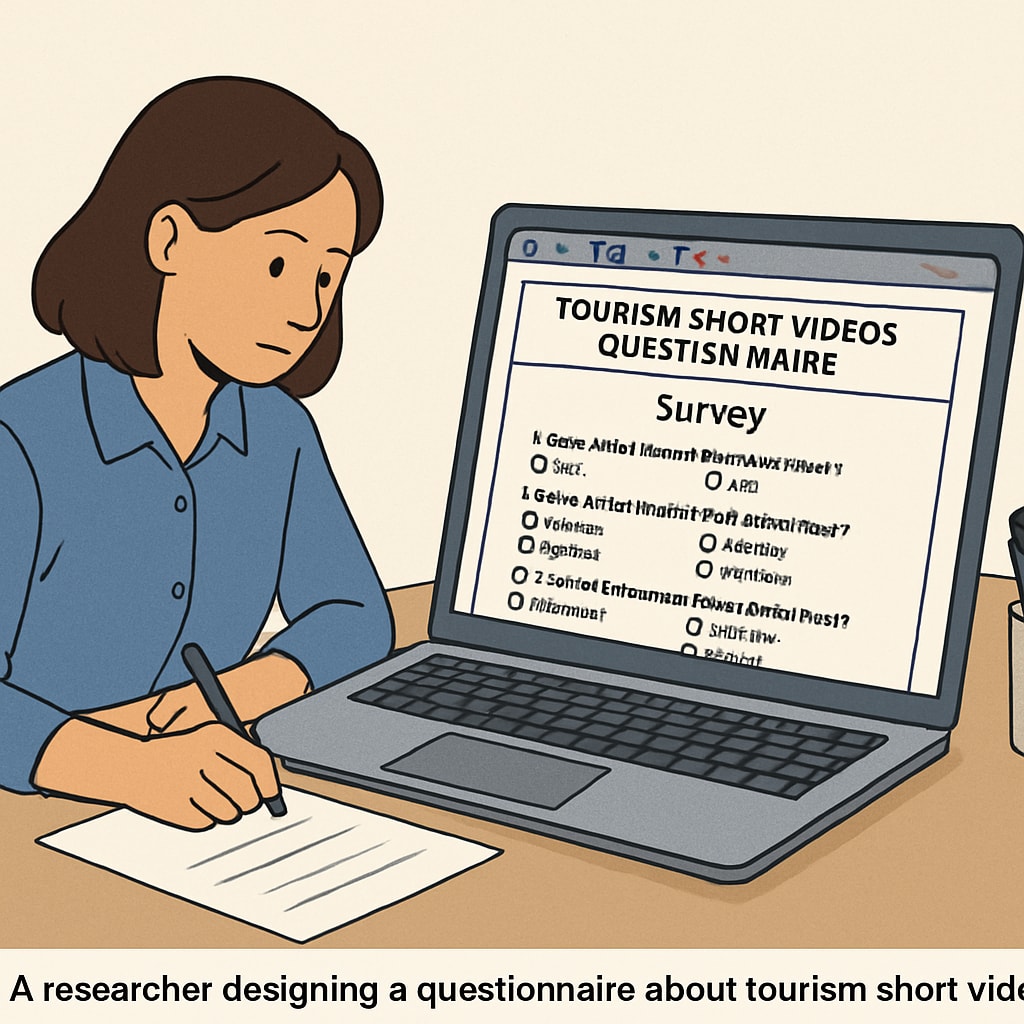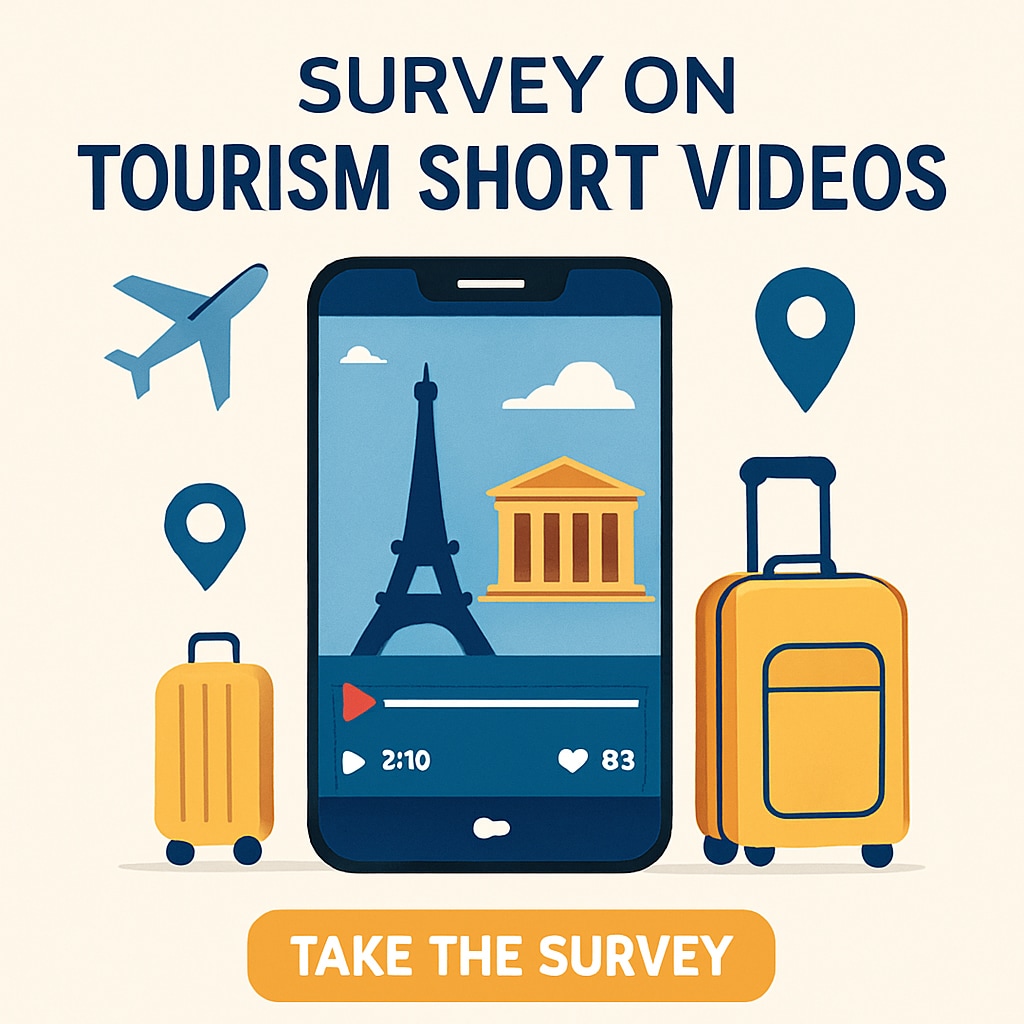Collecting questionnaire data for a master’s thesis on tourism short videos poses unique challenges. Researchers often encounter issues such as participant recruitment, data reliability, and response rates. Addressing these concerns is crucial for producing high-quality academic work in this emerging field. In addition, tourism short videos, as a relatively new and dynamic topic, require tailored research methodologies to capture audience perceptions effectively.
Common Obstacles in Data Collection for Tourism Short Video Research
Data collection for academic purposes often involves distributing questionnaires to targeted audiences. However, researchers focusing on tourism short videos face several challenges:
- Participant Recruitment: Identifying a relevant audience can be difficult, especially if the research targets a niche demographic, such as frequent travelers or content creators.
- Low Response Rates: Online surveys often suffer from limited engagement, as potential respondents may overlook survey invitations or lack motivation to participate.
- Data Reliability: Ensuring that responses accurately reflect participants’ opinions about tourism short videos can be challenging, particularly with self-reporting bias.
For example, tourism short videos often appeal to diverse audiences, including younger generations and social media users. As a result, researchers may need to utilize unconventional platforms like Instagram or TikTok to reach respondents effectively.

Strategies to Overcome Data Collection Challenges
Despite the obstacles, researchers can implement practical solutions to improve the quality and quantity of questionnaire data for their master’s thesis on tourism short videos:
- Leverage Social Media Platforms: Social media networks like Instagram, TikTok, and Facebook can help researchers reach a larger and more relevant audience. Engaging with influencers or groups focused on travel content may also boost survey visibility.
- Offer Incentives: Providing small rewards, such as gift cards or entry into a prize draw, can encourage participation and increase response rates.
- Use Clear and Engaging Questions: Crafting concise, visually appealing, and user-friendly questionnaires can improve respondent engagement and data reliability.
- Pilot Testing: Conduct a pilot test of the questionnaire to identify potential issues and refine the survey before full-scale distribution. This ensures clarity and relevance, reducing the risk of incomplete or inaccurate responses.
Furthermore, researchers should consider collaborating with travel agencies, short video platforms, or academic institutions to access larger pools of participants. Partnerships can enhance credibility and provide valuable insights into audience preferences.

Collaborative Approaches and Their Benefits
Collaboration with industry stakeholders can be transformative for research involving tourism short videos. For instance:
- Travel Agencies: Partnering with agencies allows researchers to access travelers who frequently watch short videos for trip inspiration.
- Content Creators: Engaging influencers or travel bloggers can help researchers distribute surveys to followers who actively consume tourism-related content.
- Academic Institutions: Collaboration with universities can provide access to students studying tourism, media, or related fields, ensuring a well-educated and relevant sample group.
As a result, researchers can gather more comprehensive and reliable data, strengthening the validity of their master’s thesis. Additionally, collaboration fosters a broader understanding of the impact of tourism short videos on travel behavior.
Final Recommendations for Researchers
To succeed in collecting questionnaire data for research on tourism short videos, researchers should adopt a strategic and flexible approach. Key takeaways include:
- Utilize social media platforms to reach niche audiences effectively.
- Incorporate incentives to boost participation rates.
- Focus on clear, engaging, and relevant questionnaire design.
- Collaborate with industry stakeholders for broader access to participants.
By addressing these challenges, researchers can produce meaningful insights into the role of tourism short videos in influencing travel decisions. Ultimately, overcoming data collection hurdles is vital for advancing academic knowledge in this dynamic and fast-evolving field.
Readability guidance: Short paragraphs, bulleted lists, and concise sentences are used to summarize key points effectively. Transition words such as “however,” “in addition,” and “as a result” are incorporated throughout the article to ensure smooth readability.


